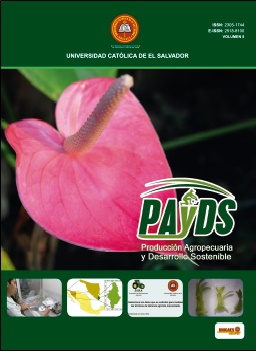Changes in land use in the municipality of Álamos, Sonora - Mexico
DOI:
https://doi.org/10.5377/payds.v5i0.5427Keywords:
GIS, livestock, maps, protected natural area.Abstract
In the context of territorial development, this work analyzed the change of land use and vegetation in the municipality of Alamos, state of Sonora - Mexico, for the period between 1980 and 2001. The area of study was characterized by a productive lag. The high rate of marginalization and the overexploitation of natural resources mainly due to agricultural activities.
The objective was to identify the magnitude and spatial distribution of land use change. In order to obtain the land use change map, the existing cartography was used in different dates and by different authors, and an overlay was made using a geographic information system (GIS), using ArcView GIS version 3.2. In the study period, the results show that temporary agriculture decreased from 73 688 to 57 588 hectares; Cultivated pastures increased by 1,050%. In the case of the bushes, practically all lost surface and in some cases disappeared.
As for the forests, the pine-oak was the only one that lost surface (56%) when changing from 47019 to 20656 hectares. The low deciduous and subcaducifolia forest had a loss of 23% of its surface. The area occupied by bodies of water decreased by approximately 40%, reducing its area from 7 963 to 4 747 hectares. Without a doubt the economic importance of the livestock activity in the municipality is one of the factors that explain the results found.
Producción Agropecuaria y Desarrollo Sostenible, Vol. 5, 2016: 13-30
Downloads
1107
Downloads
Published
How to Cite
Issue
Section
License
© Producción Agropecuaria y Desarrollo Sostenible
Copyright of the articles is transferred to the journal Producción Agropecuaria y Desarrollo Sostenible
As a user of this journal, you have:
- Open access to consult the information contained in this issue
- Permission to copy, distribute, display, perform or combine past practices in the use of information, provided it is strictly non-profit.
This journal uses a CC BY-NC license





